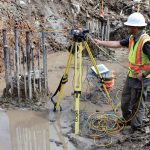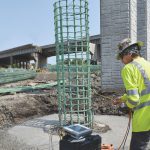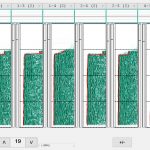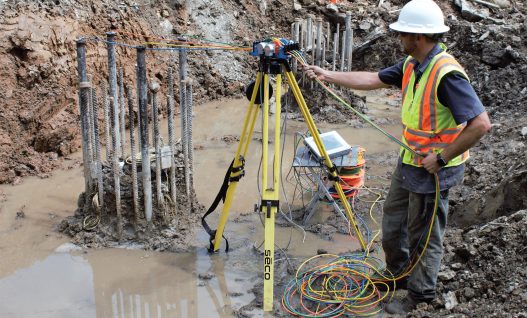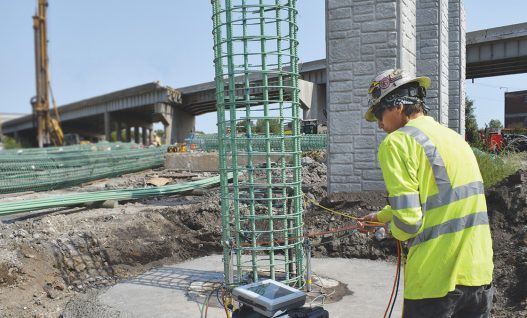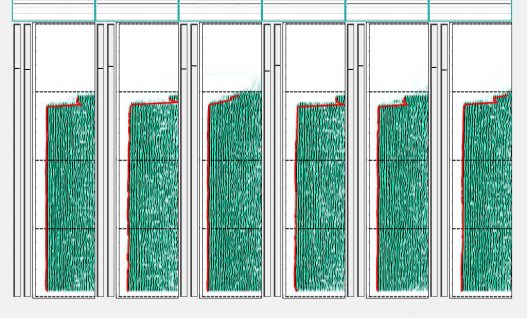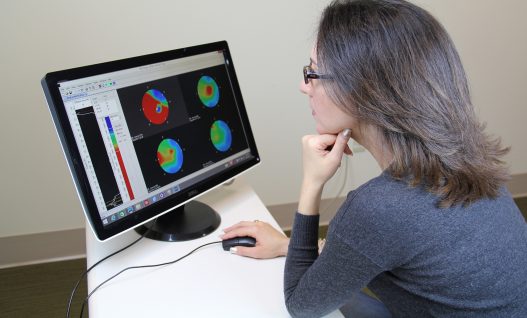Crosshole Sonic Logging (CSL)
Assessing Drilled Shaft Integrity with Crosshole Sonic Logging
Drilled shafts are prepared for integrity testing by CSL during their construction by installation of at least three tubes with a minimum inside diameter of 38mm (1.5 inches). These tubes are usually attached to the reinforcement cage along the full length of the shafts. After concrete has been poured, the tubes are filled with water. In CSL, a transceiver emits an ultrasonic signal in one tube and the signal is sensed sometime later by an additional transceiver in another tube. Poor concrete between the tubes will delay or disrupt the signal.
The GRL engineer uses the Cross Hole Analyzer System (CHAMP-Q) to lower the probes to the bottom of the shaft and moves the transceivers upward in unison, until the entire shaft length is scanned. The engineer repeats the test for each pair of tubes. The GRL engineer interprets data in the field for delayed pulse arrivals (or low signal strength) which indicate potential defects, and later reprocesses the data in the office. Results are presented in a detailed and illustrated report. Tomography analysis can be performed during reprocessing when complex situations are encountered.
PDI-TOMO tomographic software is available for superior tomographic results providing intuitive 3-D identification of questionable areas, as well as allowing for a quick and easy quantitative, comprehensive, engineering analysis.
Crosshole sonic logging integrity testing is standardized by ASTM D6760 – Standard Test Method for Integrity Testing of Concrete Deep Foundations by Ultrasonic Crosshole Testing.

